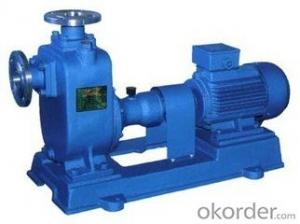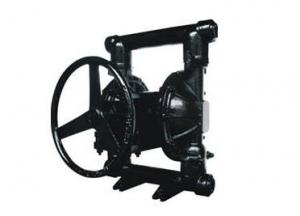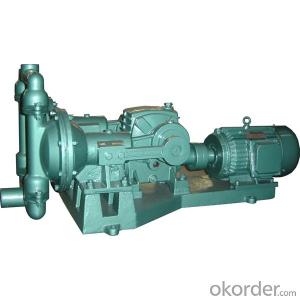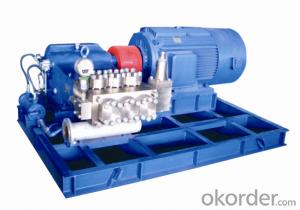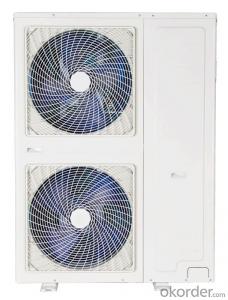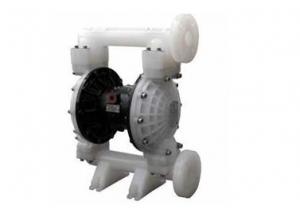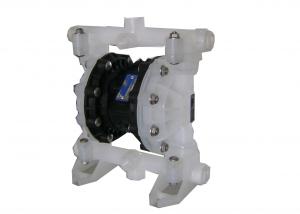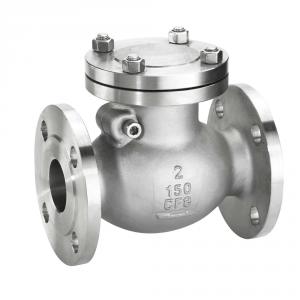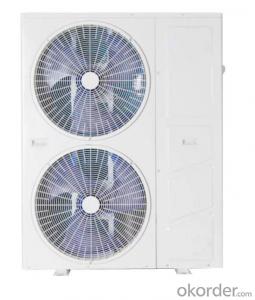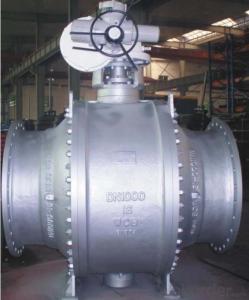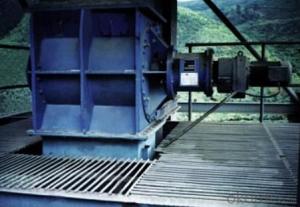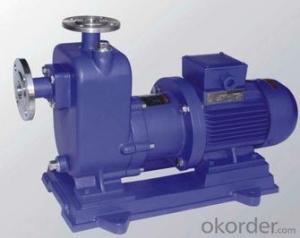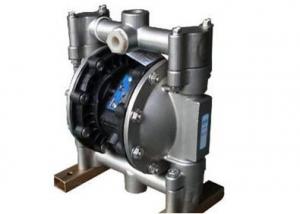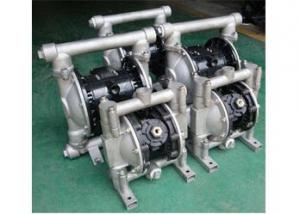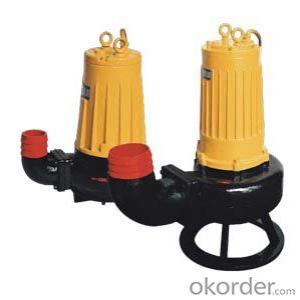ZX series self-priming pump 25ZX-3.2-2.0
- Loading Port:
- Shanghai
- Payment Terms:
- TT OR LC
- Min Order Qty:
- 10 unit
- Supply Capability:
- 300 unit/month
OKorder Service Pledge
OKorder Financial Service
You Might Also Like
A, product overview
This company produces the ZX series self-priming pump is the earliest according to
relevant technical data at home and abroad after absorption, digestion, improve the
development of pump energy saving products.Self-priming centrifugal pump, the
pump and other pump does not have the self-priming capacity, etc.Such as corrosion
resistant mechanical seals and stainless steel material can call some of the chemical,
pharmaceutical acid and alkali medium.
Second, the product features
1, the pump with self-priming function, do not need to install the bottom valve in
pipeline, only to ensure storage in pump body before work are quantitative liquid can
have "a drainage, life-long self-priming" function.So both simplifies the pipeline system,
and improved the working conditions.
2, has a compact structure, convenient operation, stable operation, easy maintenance,
high efficiency, long service life.
Three, use the product
1) suitable for urban environmental protection, construction, fire control, chemical,
pharmaceutical, dyes, and dyeing, brewing, electric power, electroplating, papermaking,
oil, mining, equipment cooling, tanker unloading, etc.
(2) apply Yu Qingshui, sea water, chemical liquid medium with acid, alkalinity and with
general mushy slurry (medium viscosity 100 mile, or less under the solid content of 30%).
(3) mount a rocker arm sprayer, the water can go into the air, a small drips to spray, is a
good tool for farm, nursery, garden, tea garden.
And (4) can be matched with pressure filter of any model and specifications, sending size
belt filter to filter the most ideal auxiliary pump.
Fourth, working conditions
Traffic: 3 ~ 500 m3 / h
Head: 10 ~ 80 m
Ambient temperature 50 ℃ or less
Medium temperature is 100 ℃ or less
Medium density of 1.24 or less by 103 kg/m3
- Q:How does the air pump spray the water gun (the principle of the car spray gun)?
- Siphon principle is adopted, compressed air suction siphon out.
- Q:Can an air pump be used for inflatable promotional items?
- Yes, an air pump can be used for inflatable promotional items. In fact, using an air pump is one of the most efficient and convenient methods for inflating promotional items such as balloons, inflatable characters, or banners. An air pump provides a steady and controlled stream of air that allows for quick and easy inflation. It also ensures that the promotional items are properly inflated to their desired shape and size. Additionally, using an air pump eliminates the need for manual blowing, which can be tiring and time-consuming, especially when inflating multiple items. Overall, an air pump is an essential tool for efficiently inflating and maintaining the appearance of inflatable promotional items.
- Q:Usually store nuts and precious supplements.
- Suitable for the best, pro, do not often use, and use it must be good ~!
- Q:Is there any limit to the size of the object an air pump can inflate?
- Yes, there are limits to the size of the object an air pump can inflate. The size of the object that can be inflated depends on the power and capacity of the air pump, as well as the pressure it can generate. Larger objects may require more powerful air pumps or specialized equipment to inflate.
- Q:How does an air pump handle different weights of inflatables?
- The air pressure delivered by an air pump can be adjusted to accommodate various weights of inflatables. When an inflatable is being inflated, the air pump introduces air into it, creating internal pressure. Depending on the weight and size of the inflatable, the pump can be modified to deliver more or less air. For lighter inflatables, such as small beach balls or pool toys, the air pump can be set to a lower pressure. This prevents the risk of overinflation, which could potentially harm the inflatable. By supplying just the right amount of air, the pump guarantees that the lighter inflatable is properly inflated without the possibility of bursting. Conversely, for heavier inflatables like air mattresses or large swimming pool floats, the air pump can be adjusted to a higher pressure. This allows for a greater volume of air to be pumped into the inflatable, resulting in a sturdier and more supportive structure. By adapting the pressure accordingly, the pump ensures that heavier inflatables are fully inflated and capable of supporting their intended weight. In conclusion, an air pump's ability to handle different weights of inflatables lies in its capacity to adjust the air pressure. By enabling users to determine the desired pressure level, the pump can safely and effectively inflate a wide range of inflatables, guaranteeing optimal performance and durability.
- Q:How does an air pump regulate air flow in different applications?
- Air flow in various applications is regulated through different mechanisms and control systems by an air pump. The specific method of regulation relies on the type of air pump and its intended use. In general, air flow regulation by an air pump can be achieved by adjusting the speed or volume of air it delivers. This can be done using several methods: 1. Adjustable valves: Many air pumps have valves that can be adjusted to control the amount of air flowing through the system. By manipulating the valve opening, the user can increase or decrease the airflow as needed. 2. Pressure regulators: Some air pumps, especially those used in pneumatic systems, utilize pressure regulators to maintain a consistent and controlled air pressure. These regulators monitor the system's pressure and automatically adjust the airflow to maintain the desired pressure level. 3. Variable speed drives: Certain types of air pumps, such as those equipped with electric motors, make use of variable speed drives to regulate air flow. By adjusting the motor's speed, the pump can deliver more or less air as required for the application. 4. Feedback control systems: Advanced air pumps may incorporate feedback control systems that continuously monitor and adjust the air flow based on specific parameters. These systems rely on sensors to measure variables like temperature, pressure, or flow rate, and then automatically adjust the pump's operation to maintain the desired airflow. 5. Manual control: In some instances, air pumps can be manually regulated by the user. This involves adjusting the pump's settings, such as speed or valve openings, to achieve the desired air flow rate. Overall, air pumps utilize a range of mechanisms and control systems to regulate air flow in different applications. The method employed depends on factors such as the type of pump, the specific requirements of the application, and the desired level of control.
- Q:Can an air pump be used for inflatable trade show booths?
- Certainly! Inflatable trade show booths can indeed make use of an air pump. As a matter of fact, they often rely on it as their main means of inflation and deflation. An air pump offers a speedy and effective approach to inflating the booth, guaranteeing its prompt readiness for use. Moreover, it facilitates effortless deflation and packing up after the trade show concludes. To ensure the proper inflation and functionality of the inflatable booth, it is crucial to select an air pump that matches the booth's specific size and requirements.
- Q:How to prevent overheating of an air pump?
- To prevent overheating of an air pump, there are several steps you can take: 1. Ensure proper ventilation: Make sure that the air pump is placed in a well-ventilated area. Adequate airflow around the pump will help dissipate heat and prevent it from overheating. Avoid enclosing the pump in a tight space or covering it with any materials that may restrict airflow. 2. Regularly clean the pump: Dust and debris can accumulate on the air pump, blocking the ventilation and causing it to overheat. Regularly clean the pump's exterior and remove any build-up of dirt or dust using a soft brush or cloth. This will help maintain proper airflow and prevent overheating. 3. Monitor the operating temperature: Many air pumps come with built-in temperature sensors or indicators that can help you monitor the temperature. Keep an eye on these indicators and if the temperature starts to rise significantly, take appropriate action to prevent overheating. If your pump doesn't have temperature sensors, you can use a separate thermometer to measure the temperature around the pump periodically. 4. Avoid excessive workload: Overworking the air pump can lead to overheating. Make sure that the pump is not being used beyond its recommended capacity. Check the manufacturer's guidelines to determine the maximum load the pump can handle and avoid exceeding it. If you need to increase the airflow, consider using multiple air pumps instead of overburdening a single one. 5. Use heat-resistant materials: If the air pump is placed in an environment with high temperatures, consider using heat-resistant materials around it. For example, you can insulate the area with materials that have good thermal properties or use reflective surfaces to deflect heat away from the pump. This can help minimize heat transfer and reduce the risk of overheating. 6. Maintain proper power supply: Ensure that the air pump is connected to a stable and appropriate power supply. Fluctuations in voltage or using an incorrect power source can cause the pump to overheat. Check the power requirements of the pump and use a high-quality power source that meets those specifications. By following these preventive measures, you can significantly reduce the risk of overheating for your air pump, ensuring its longevity and optimal performance.
- Q:How does an air pump prevent water contamination in beverage dispensers?
- An air pump prevents water contamination in beverage dispensers by creating a barrier between the liquid and the external environment. When the pump is activated, it pumps air into the dispenser, increasing the pressure inside. This pressure prevents any external contaminants, such as bacteria or dust, from entering the dispenser and contaminating the water or beverage. By maintaining a positive pressure inside the dispenser, the air pump effectively prevents the backflow of any potentially harmful substances. This is especially important in situations where the dispenser is used in public areas or at events, where multiple people may come into contact with the dispenser and introduce contaminants. Additionally, the air pump also helps maintain the freshness and quality of the beverage. By preventing the ingress of air from the surroundings, it minimizes the risk of oxidation, which can affect the taste and properties of the drink. This is particularly crucial for beverages that are sensitive to exposure to oxygen, such as carbonated drinks or juices. Overall, an air pump acts as a crucial protective mechanism in beverage dispensers, ensuring that the water or beverage remains untainted and safe for consumption by creating a barrier against potential contaminants and maintaining the integrity of the drink.
- Q:Are there any environmental impacts of using an air pump?
- Using an air pump has several environmental impacts. Firstly, the functioning of air pumps relies on electricity, which is mostly generated by burning fossil fuels like coal or natural gas. These fuels emit greenhouse gases, contributing to climate change and global warming. Moreover, the manufacture and disposal of air pumps contribute to various environmental problems. The production process involves extracting and processing raw materials, leading to habitat destruction, soil erosion, and water pollution. Additionally, when air pumps reach the end of their lifespan, they often end up in landfills, contributing to waste buildup and potential contamination of soil and groundwater. Furthermore, air pumps cause noise pollution that can disturb wildlife and disrupt their natural habitats. This disturbance negatively impacts animal behavior, reproductive patterns, and overall well-being. To address these environmental impacts, it is crucial to consider energy-efficient air pumps that consume less electricity. Proper disposal and recycling of air pumps are also important to reduce waste and minimize the release of harmful substances into the environment.
1. Manufacturer Overview |
|
|---|---|
| Location | |
| Year Established | |
| Annual Output Value | |
| Main Markets | |
| Company Certifications | |
2. Manufacturer Certificates |
|
|---|---|
| a) Certification Name | |
| Range | |
| Reference | |
| Validity Period | |
3. Manufacturer Capability |
|
|---|---|
| a)Trade Capacity | |
| Nearest Port | |
| Export Percentage | |
| No.of Employees in Trade Department | |
| Language Spoken: | |
| b)Factory Information | |
| Factory Size: | |
| No. of Production Lines | |
| Contract Manufacturing | |
| Product Price Range | |
Send your message to us
ZX series self-priming pump 25ZX-3.2-2.0
- Loading Port:
- Shanghai
- Payment Terms:
- TT OR LC
- Min Order Qty:
- 10 unit
- Supply Capability:
- 300 unit/month
OKorder Service Pledge
OKorder Financial Service
Similar products
New products
Hot products
